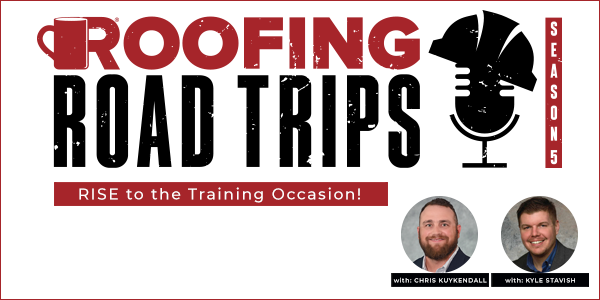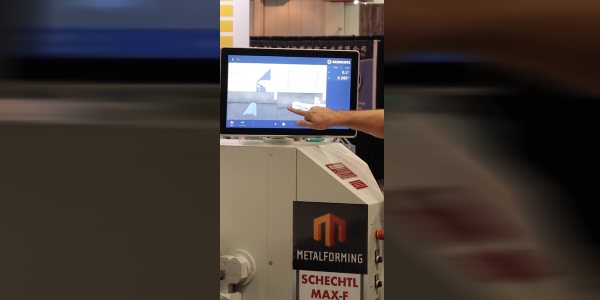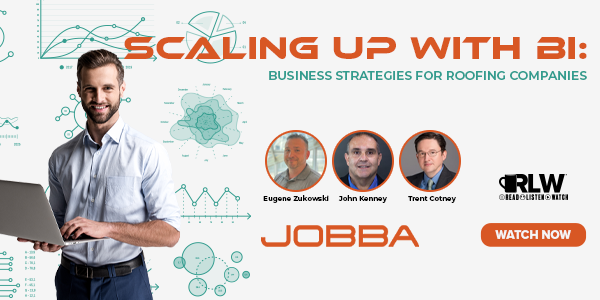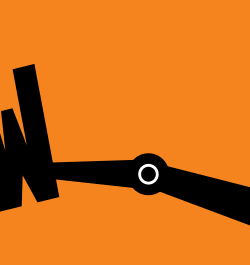Kyle Stavish and Chris Kuykendall – RISE to the Training Occasion! - PODCAST TRANSCRIPT
October 25, 2023 at 12:00 p.m.Editor's note: The following is the transcript of a live interview with Kyle Stavish and Chris Kuykendall from Mule-Hide. You can read the interview below or listen to the podcast.
Intro: Welcome to Roofing Road Trips with Heidi. Explore the roofing industry through the eyes of a long-term professional within the trade. Listen for insights, interviews and exciting news in the roofing industry today.
Heidi J. Ellsworth: Hello and welcome to another Roofing Road Trips from RoofersCoffeeShop. This is Heidi Ellsworth. We hear every single day the importance of training in our industry. There's nothing more important in roofing than training, making sure that we are putting on, and our contractors have the tools to put on the highest performing roofing systems. So we talked to our friends at Mule-Hide and said, "Hey, come talk to us about your training program because it's pretty phenomenal." So I want to introduce Chris and Kyle from Mule-Hide to Roofing Road Trips. Hello, gentlemen.
Chris Kuykendall: Hello.
Heidi J. Ellsworth: Hello. I'm so happy to have you both on here today. Before we get started talking about training, and I'm really excited because I know you have some industry-leading programs, let's start with some introductions. Kyle, if you could introduce yourself, tell us what you do at Mule-Hide, that would be great.
Kyle Stavish: Thank you. My name's Kyle Stavish, I'm the National Training and Business Development Manager with Mule-Hide. Been with Mule-Hide almost six years, been in these positions about two. But before that, I was a territory manager in the Upstate New York area. A lot of what we do now, and what I'm trying to implement across the country, is what I did a lot of day in and day out in the past.
Heidi J. Ellsworth: Awesome. I love it, I love it. And Chris, can you introduce yourself and tell us a little bit about what you do at Mule-Hide?
Chris Kuykendall: Sure. I'm currently a territory manager in the state of Texas. Before that, I was the fluid-applied manager for Mule-Hide so I supported our fluid-applied segment across the country. And before that I was a contractor and fluid-applied applicator for six years.
Heidi J. Ellsworth: Wow. You've had the experience across the board. I love it. And now you have Texas.
Chris Kuykendall: Well, go Rangers. [inaudible 00:02:06].
Heidi J. Ellsworth: I love it, I love it. Okay. I think everyone out there knows the Mule-Hide brand but let's ... I would love to just share a little bit more about the company overall. So Kyle, maybe you could share ... Just give us a little bit of history of Mule-Hide, and today what you offer to the roofing industry.
Kyle Stavish: Right. The name Mule-Hide's actually been around for over 100 years, but the brand that we live in today, Mule-Hide's been around almost 40 years. We're a low slope manufacturer. We're part of a large distribution network which is really what helps us in the marketplace, getting our products and our people to every corner of the country. We have roofing systems from single plys to modifieds now to coatings, and then within that just a plethora of different maintenance and repair products. But our claim to fame is really ... It's what we're talking about today, it's our training, it's our people and it's the interaction that we have in the marketplace with our customers. We like to think of ourselves as our sole existence is to take contractors and grow them up, right? To take them from wanting to get into the low slope industry, and working with them and training them, and then bringing them into the fold with our systems and our products.
Heidi J. Ellsworth: Great. You stopped just for one second there. Chris, did you see that, a little bit of a glitch?
Chris Kuykendall: No, I didn't.
Heidi J. Ellsworth: Okay. Okay, good. Okay. Then that means it was just me. Perfect. Okay, we're going to keep going. Thank you, Kyle, that's perfect. Okay. Starting fresh to the next question. Kyle, I mean that's so impressive when you think about how long the Mule-Hide brand has been around and how instrumental ... And really you have played such an important ... Or the company has played such an important role in the industry for now 40 years in the current as it is. Like you said, really one of your well-known benefits is the training so let's talk about that. Let's talk about the importance of manufacturers really having strong training programs, and what your training program is at Mule-Hide.
Kyle Stavish: Right. It's a continuing education thing. That's my mantra as an individual is to always be learning something new. The building products industry itself is always evolving and always growing, but there's a couple of different aspects to it that we talk about on a day-to-day basis. You have the additional products, the additional systems, the new technologies that are out there that we want to make sure that we're getting in front of our customers and in the industry as soon as possible and as repetitive as we can. But it's also an opportunity to train new labor which is something we talk about every single day across the industry is the availability of up-and-coming labor or the lack thereof of existing labor.
We're very, very well-rounded in being able to train new people, being able to train existing people again and always make sure that we're at the forefront of training. By having training centers and being able to have focused training we're able to bring people out of their environment and have their full attention which is really just one step of the continuing education process. But it's the best opportunity to have people's focus and attention to be able to share with them whatever the specific product or system that you happen to be training that day.
Heidi J. Ellsworth: When I look at your training, you are training across all your systems all the time, right? And maybe just talk about those systems and what contractors can, from that big picture, expect to get training on.
Kyle Stavish: Right. So the industry starts, right, we're a low-slope manufacturer. The system starts with the actual design of the roof, and the installation of the roof, and the education of low slope in general, right? What does a substrate mean? What does a single ply mean? What does installation cover board mean? And how does it all tie together to make a roof waterproof, which is what our customers are delivering to the end user?
However, in the low-slope roofing industry, you can have multiple layers of roofing. And this is then where Chris comes into it a little bit, right? You've got different options as far as what can you do with the roof after it's 20, 30 years old. You don't always have to tear it off. But there's different ways to talk about and to train people, and educate them on what to do whether it's just a repair, whether it's a re-roof or whether it's a restoration which is then an option where we can get into with the coatings. Really we start with basic education of why is a roof ... Why do you install these parts and pieces this way? And what do we want to make sure that we avoid during the installation? Then what do we want to avoid in the long run?
Heidi J. Ellsworth: And Chris, you started out as a product manager for fluid-applied so you really saw that bigger picture across the country, and now being a regional manager. You have done a lot of training on coatings. So talk a little bit about that, and just how you're seeing the coatings growing and how important that training is for those applications, especially roof restoration.
Chris Kuykendall: So Kyle mentioned environments of training. Our RISE academies are more formal environments. And then you have these informal environments that happen all the time in the contractor's office, in an ABC warehouse, on the tailgate of their truck in the parking lot as we're working through a punch list. When you're considering these formal versus informal environments of training, the context of it always has to be relationship, okay? Mule-Hide's main goal, and outcome, and training is that they view our team at Mule-Hide as a resource, as a relationship that's going to help them improve.
How does that come to bear on coating specifically? Well, to really do effective coating training you do have to do effective low-slope treating, right? Not all roofs are good candidates for coating, sometimes they have to be re-roofed. The roof is just done and it's time to start over. The way that we've seen coating training done effectively is that we're talking about it relative to the other options that Mule-Hide offers as well, right? We're not just a coating company, we're not just a TPO company, we offer pretty much any option that you could think of for that roof. At 30,000 foot my answer is, you have to talk about effective coating training in the context of effective low-slope roofing, and that means sort of holistic education. Now, we can get more specific about ... More granular about coating specifically if you want to. But, in general, we have to have the conversation in terms of best practice of low-slope roofing.
Heidi J. Ellsworth: Right. That makes total sense because what we're hearing every day talked about is what roof is okay for coatings, what roof isn't okay for roofing ... Or for coatings. And then it needs to go on to a full system. So really that basic training across the board is going to help determine which Mule-Hide products are going to be the best solution overall for that roofing system. Okay. I really like that. And I want to talk about what you had said, Chris, the RISE program and the formal training versus the field training. So let's first start with, how many training centers do you currently have? And let's talk about those, Kyle. Maybe tell us about those training centers. Are you working on any new ones?
Kyle Stavish: We currently have three training centers. We have one in ... Near our home office in Beloit, Wisconsin, we have one in, I guess, it's Northeast New Jersey, and then we have one in Orlando, Florida. Those are up and running, fully functional, being used every single day of the week, if not every week of the month. And then we are working on two other training sites. I'm actually in the process right now of figuring out either the site or the terms on a location. Most likely going to be Texas, and then one in Arizona as well. What we're trying to do is reach the country. As you can see, we have the Midwest covered, we have the northeast, we have the southeast but we need to ... We can't forget about our friends in the southwest and in the west region. So we're working on that. The ultimate goal is that by the middle of 2024 that those sites will be up and running fully functional.
We've learned a lot as I've developed these programs ... Or these facilities. I always tell my team and the people in the field that once we get to four and five it's going to be seamless because I've already figured out all my mistakes and what it takes to get them up and running. The program itself is run under a very simple process where it'll be very easy to repeat. Once those sites are open, guys can go in the next day and run a training class because it'll be fully stocked, organized and the program itself is going to be the same no matter what site they're at.
Heidi J. Ellsworth: Okay. Sorry about that. I lost internet but you guys kept going. This which is awesome about the Riverside is it keeps uploading from yours so we're safe. So they'll cut this part out what I just said. Kyle, you should be good. Sorry about that. My internet just dropped. Okay. Okay. So yes, I'm going to start over. Okay. Just so I know, you finished up talking about you're going to have them in the west, and you're developing these new, and you got every ... In the centers. So I'm going to go to the next question on what upgrades. Does that work?
Kyle Stavish: Yes.
Heidi J. Ellsworth: Yes, okay. Excellent. I am so excited about these training centers. And the fact that you're coming to the West Coast too because Oregon, that's where I'm from, that's what we need out here to have those training centers. One of the things that I've heard people talk about, and that I'm familiar, is that you have done a number of upgrades and new technologies within those training centers. Kyle, let's talk a little bit about that. What can people expect?
Kyle Stavish: Right. It's simple in my mind and in others might ... Chris as a user of these centers might look at it a little bit differently. Because all of our employees, all of our territory managers are our trainers. We want those people to be able to go to any facility and to walk in and have the system and the organization already set up for them. What we use for our training centers organization and program is a 5S model, it's an old Japanese model, it basically means that there's a place for everything, right? So every tool is labeled of where it goes. The garbage cans are labeled, all the accessories, everything on the shelves are labeled as far as where they are and then where they go back to. The setup is very simple.
There's no wasted time in setup, people running around scrambling. The cleanup is very simple. So that Chris could do a training on Tuesday, and be very seamless, and by the end of the day that training center will look exactly as it did when he walked in. And another territory manager could go in the next day and do a training, right? So that's the organizational tool that really helps us just rinse and repeat every single day of the week if these people want to come in for training and we have that availability.
We've put in a state-of-the-art ventilation system. Obviously, safety is something that we need to be conscious of. And we're not outside roofing so we put in a state-of-the-art ventilation system at each of these facilities. Make sure we have the proper electric to be running 240-volt robotic welders inside the facility, and make sure that we have the ventilation, to make sure we have the right electric. And then as far as technology goes we've got ... Everything's digital. I guess I'm not sure of the term, right? We've got Bluetooth connection for everything, we've got video systems implemented into these. We have only done one or two this year. But the goal to be moving forward and, obviously, be able to reach more people in the future is to be able to start implementing webinar systems, doing recordings, things like that so we can actually reach more people that are just ... Then would just be in the actual facility.
Between technology, between safety, ventilation and just a really, really clean organization process, we feel completely confident that we really hit all the aspects that are needed from a training aspect. And I think the biggest takeaway is that there's no time wasted. When you're there you're learning and you're being educated the whole entire time.
Heidi J. Ellsworth: That's cool, that's cool. And Chris, from your perspective, coming into these training centers with your customers ... Obviously, you've been involved within the training centers a lot. To talk to what Kyle's talking about with all these improvements, safety and digital, how does that work for you and your customers?
Chris Kuykendall: Well, not that Kyle needs his ego inflated anymore but he's done a great job at these. I'm just kidding. Kyle's one of the most humble people I know, he tells everybody. Honestly, they've done a great job organizing these. Effective training has got to be predictable at some level, right? I mean, it's got to be organic and open-handed to be able to answer questions and be flexible in that sense, but it also has to be very predictable. That piece right there is where I think the folks of there have done a great job developing these centers. So for me as a user, the fact that I know where the hand welders are, the fact that I know where the drill bits are, the fact that I know where the pipe boots are, that speeds things up. It allows us to focus less on setup and more on that contractor and their questions. That's where I think they've done a fantastic job.
Heidi J. Ellsworth: That's excellent. Okay. Let's take that one step further, Chris. Really when you're looking at going into the training centers ... And it sounds like you're going to have your own in Texas here pretty soon which is pretty exciting. You also do a tremendous amount of field training. And as Kyle said earlier, that's all done by the regional managers which is the position you're in right now. Talk to us a little bit about that field training, and how it works, and really what that brings to the contractors.
Chris Kuykendall: Again, we're talking that more informal treating environment. Mule-Hide extends us, as territory managers, quite a bit of flexibility in the sense that where we do these trainings, how we talk about certain elements of roofing, et cetera, et cetera. I mean, all the way down to PowerPoints that have been developed for us to show so that even in informal environments, training is streamlined. It's a common practice for me, for example, in my territory to show up to one of our ABC distribution centers, set up my computer and a TV in the warehouse, and some chairs, and we start doing some hands-on. We start going through some slide decks that get into the granular parts of what it means to be a low-slope roofer. That sort of hands-on informal field-type training, it happens in a variety of ways. What I just told you in a warehouse that's one instance.
Where it happens a lot is on the roof. We pride ourselves on trying to walk as many, if not more roofs than anybody in the industry. A lot of contractors are visual learners, right? You can put them in front of a PowerPoint, but the second you get them on the roof it all seems to click and fall into place. We drive that home at Mule-Hide. Get on the roof with them, right, that's where learning really is going to take place. It's having a bunch of different arrows, a bunch of different strategies and all roads lead to continual improvement in the context of a relationship. We sincerely want contractors to succeed, and that means they have to have the information to do a good job. It happens in 1,000 different ways, I guess, but it's all very, very consistent at the same time.
Heidi J. Ellsworth: That's excellent. And Chris or Kyle, I'm not sure who would have these numbers. And it doesn't have to be exact. But I'm just curious, how many people are you training per year in the training centers versus in the field?
Kyle Stavish: That's a great question. And if you were my boss asking me that I'd probably come up with a more specific number. Let me back it out, right? Our ideal training class, and the way that the centers are set up, is about 12 to 16 attendees. And the way that we run our programs is we could do a training a week because you have to have your setup day, you have to have your training days, you have to have your stock days. Call it each training center we could train close to 50 people a month when we're fully up and running. That's 250 people a month across the year. And, obviously, we don't train every single month, we do take into consideration we need time for maintenance, and rest, and things like that. But ultimately, I mean, I think the answer is we have the opportunity to be in front of thousands of contractors on a yearly basis which is huge.
And the reason I say that is because when we only had one training center in the Midwest, and that was the only one for the entire country, it was very difficult to get contractors to travel from the Northeast, the Southeast, the Southwest, the west to come to Beloit, Wisconsin where our training center exists at all different times of the year. But the people that used it the most in, the Midwest, we're the most successful and still are because they could get their people to travel here within a really easy flight or a very reasonable few hour drive.
Our system will enable us to do five times as much training as we've done in the past. But we're not limiting ourselves on a timeline of okay, well, you can only use it this week because then someone else is using it for this and someone else is using it for this. Our ultimate goal is to use it as a stepping stone, to what Chris talked about. A lot of our training is done in the field, but our best training is done in the training centers because we have the full attention. And then we can figure out what the needs are and then you're able to portray that in a better environment in the training centers.
Chris Kuykendall: Heidi, I wanted to add something to that. If you strictly limit training to sort of a formal environment which ... Don't get me wrong, I believe that the best learning is happening at our RISE training centers because you're meeting the education, and the visual, and the hands-on so the full person is being engaged at the training center. But I don't think training is just limited to that. I really do believe that hundreds if not thousands of contractors are being trained via text message, and phone call, and roof walk, and FaceTime every single day by Mule-Hide territory managers. The few minutes that we've been recording this, I've got four contractors that have reached out to me with questions.
Heidi J. Ellsworth: Wow.
Chris Kuykendall: When I make that return phone call training is about to happen, right? Again, those informal, formal environments, they work together to help the contractor succeed.
Heidi J. Ellsworth: That's such an excellent point.
Kyle Stavish: This is cliche but I'm a sales guy at heart, I've been in sales my entire career. We're in a technical industry and training is selling, you're teaching someone and selling is training, right, so you're answering questions. The piece about doing a lot in the field, it helps develop the needs for what we need to train in the training centers. Because in the same breath that we're very organized and very systematic about it, we can also be very, very flexible to meet contractor's needs specifically to whether it's a specific job they have coming up, or whether it's just overall introductory education all the way up to a roof restoration with coatings.
Heidi J. Ellsworth: You have seen a real evolution from your your IT, which was intensive training, to what you have today with the RISE, Roofing Installation and Systems Education. So that's to your point. You as a company have evolved in the type of training you need both infield and in training. Kyle, maybe talk a little bit to just that evolution in your training program.
Kyle Stavish: Right. So when I started almost six years ago, our training program was ... It's similar to what I already said. It was great but it was limited in access and it was limited in availability. It was a great program. Throughout a lot of the things that we've done, my team and I have done to build up this new training program, we've actually reverted to a lot of the old systems that worked before. Although I hate to hear anyone say, "We do it this way because we've always done it this way." There's a lot of things that worked before and we're proving that out. Most low slow roofing, and roofing in general, it's an antiquated piece of the ... Of what we do every single day. It's being able to get in front of more people, it's being able to train on more products and it's getting to be able to be flexible to meet the needs of other people.
And it also enables our territory managers, our sales guys, our technical sales force to be able to have multiple follow-ups. So it's not just putting those thousands of contractors and hundreds of associates through training, it's having the ability to get them back in a few months later and to have a follow-up because that's really where everything is really brought full circle is the ... Like Chris said, the relationships that's established. If he goes out and walks a couple of roofs with a potential contractor and finds some deficiencies or some areas of opportunity, we'll call them, and then he knows exactly what he needs to spend a specific amount of time on in a training environment.
And before, we were very, very specific about what we offered and it just ... I didn't see that we were able to be flexible outside of that. To simplify it and sum it up, we used to only ever train on EPDM and TPO. Well, we clearly sell a heck of a lot more products and systems than that so why are we not making it available to be able to show someone every single system and every single product that we have?
Heidi J. Ellsworth: That's so smart. You two have both been saying this from the very beginning, it's about the roofing system, it's about the overall, the every part of it, and really training on that. Chris, as contractors are coming into either ... Obviously, into the training centers, but also in the field when you're out on the roof with them, what can contractors expect, and/or what should they prepare for when entering into the RISE program?
Chris Kuykendall: Ooh, that's a good question. I think this may be is a good time to sort of profile some of the different kinds of contractors that are coming through our system. As you know, Mule-Hide is a sister company to ABC Supply. A lot of our contractors are coming from the residential roofing background and they're wanting to expand their business, right? They're wanting to learn how to diversify and to grow and so they want to get into commercial and low-slope roofing. We talk to those contractors, we find out what are their strengths, what are some areas of improvement that they need. And sometimes the best entryway or the best on-ramp into commercial roofing is to talk about coatings. A contractor that we're sort of getting into low slope via coatings could probably expect to learn more about coatings early on, right? The importance of adhesion tests, the importance of moisture surveys, the importance of qualifying a coating candidate.
Whereas say one of our contractor profiles is someone that's been certified with maybe another low slope manufacturer but is looking ... For whatever reason, they want to learn more about Mule-Hide and they want to start using our products. Their expectations and what they're going to experience starting out is going to be a little bit different. There's not a broad stroke way for me to answer your question because we try to contextualize, where's that contractor coming from? What are the goals of their business? We got to meet them where they're at, Heidi, and that means that the pathway sometimes is different from contractor to contractor.
Heidi J. Ellsworth: You know what? It goes back to what Kyle was saying. It's about asking the right questions, finding out what their goals are, figuring out what their needs are. And I love that. Let's talk just real quick about some of the success. So Kyle, you see this nationally. What has been the impact of Mule-Hide's training on contractors that have completed the program, and what successes are you seeing?
Kyle Stavish: Great question. And I'd love to tie an actual sales number to it or number of contractors that we've certified. That's not ultimately what our goals are, right? One of our vendors that we work with a lot they've always said, and I really liked it. "We're just trying to make roofers better. Ultimately it will grow Mule-Hide business but we're trying to make roofers better." But specifically, I mean, we've gotten a lot of contractors ... And I'm going back years, right? We've taken a lot of guys that their business was specifically steep slope shingles. Now our highly successful, have million-dollar businesses on both the low slope and the steep slope side because we've actually helped them enter into that side of the business. It is a completely separate side of the business. Any contractor that knows you don't budget and you don't bid a shingle roof the same as you do a low slope roof. And/or a coatings job versus a EPDM or TPO job.
But we've helped a lot of contractors get into that side of the business, and then ultimately grow that side of the business. But I'd say the biggest thing that we've done is we've established a better baseline of contractors as we continue to evolve. And we have a lot of demand at times for contractors that we need to provide for jobs through specifications or through our architectural relationships or our private developer relationships, for example. We now have a lot better footprint of knowing where to go to provide labor ... Help point people in the direction, I should say, to contractors. And that helps ultimately build their business because we believe in them because they've been through our training programs, we've seen their work, we've witnessed their deficiencies and we've seen them resolve the errors to become a better roofer and provide a better product. I mean, I could tell you every single day we're gaining contractors and we're growing sales, but the big picture is we've continued to just grow, and bring more contractors into the Mule-Hide family, and help them grow their business.
Heidi J. Ellsworth: I love it. And Chris, what have you seen success-wise from contractors who've gone through this program? How has it helped build their business?
Chris Kuykendall: Well, I mean, just confidence. When you're trying to grow your business, especially in an economy like ours it's daunting. It can be overwhelming and scary, especially ... I don't know how much a nail gun and a compressor is, but I think the entry-level investment to steep slope versus the entry-level investment into low slope is significantly different in some ways. It can be scary, it can be daunting. I think a lot of the success that we have is, in some ways, functioning as sort of a coach, and a cheerleader, and a trainer, and all of that at the same time for contractors that are trying to take this big step in the evolution of their companies.
It's not uncommon for us to hear, "Mule-Hide helped us get started in low slope." We take a lot of pride in that. You were faced with this growth opportunity, and you had someone that was there with you to guide you through it. We try as TMs, and as Mule-Hide to keep that in mind, the pain points that contractors are feeling every day. And then we try to adapt our training, try to adapt the desired outcomes to how can we help roofers get better. How can we help their companies grow? And then, of course, Mule-Hide will benefit from that as well.
Heidi J. Ellsworth: I love it, I love it. Okay, Kyle, how can contractors get involved with the RISE program? What's their steps?
Kyle Stavish: So the easiest step would be, as people are listening to this, if you're already familiar with Mule-Hide, or you already know your territory manager, you know your Chris Kuykendall's of the world, you can reach out to them and say, "When's the next upcoming training? Where is it? I'm willing to travel." And then our team can point them in the direction. The other thing that they can easily do is Mule-Hide.com. We have a find a rep link on our website that they can ... If they don't know their territory manager, they don't know who manages the area that they're in, or they're new to the market, they can get in communication with them that way.
And again, our territory manager's jobs, one of the core jobs duties is to train so they're welcoming those phone calls every single day. I mean, we've done a pretty good job, over the last couple of years, of being more involved in social media. You could see our links and our posts on ... I don't know how many there are. Facebook, Instagram, LinkedIn. You can send a message to us internally at Mule-Hide, or comment on a post and say, "Hey, reach out to me." Our marketing team does a fantastic job of making sure that they facilitate and they navigate that message to where it needs to go.
Heidi J. Ellsworth: I am so happy to have Mule-Hide on RoofersCoffeeShop and CoatingsCoffeeShop so they can find your directory on both of those sites. Also, with all this information that Kyle just went over. Check out the Mule-Hide directories. Gentlemen, thank you so much, really inspirational. I love what you're doing and I'm really excited. Kyle, when that facility gets out west, if it's anywhere close to Oregon, you might have a visitor, I want to head over there and check it out.
Kyle Stavish: Absolutely. We'll send you a link.
Heidi J. Ellsworth: Okay. I'll be finding you don't worry. Thank you both again for being on this Roofing Road Trips, I really appreciate your time.
Chris Kuykendall: Sure.
Heidi J. Ellsworth: Thank you. And thank all of you for listening, what great information. Training is where it's at, this is what you're looking for. Now here is a great solution you can find all over the country. Stay tuned on the Mule-Hide directories on RoofersCoffeeShop and CoatingsCoffeeShop to find out when those new training centers will be opening in Texas and out west. Thank you all. Be sure to check out all of our podcasts under the read, listen, watch navigation under Roofing Road Trips or on your favorite podcast channel. Be sure to subscribe and set those notifications so you don't miss a single episode. And we'll be seeing you next time on Roofing Road Trips.
Outro: Make sure to subscribe to our channel and leave a review. Thanks for listening. This has been Roofing Road Trips with Heidi from the RoofersCoffeeShop.com.
























Comments
Leave a Reply
Have an account? Login to leave a comment!
Sign In